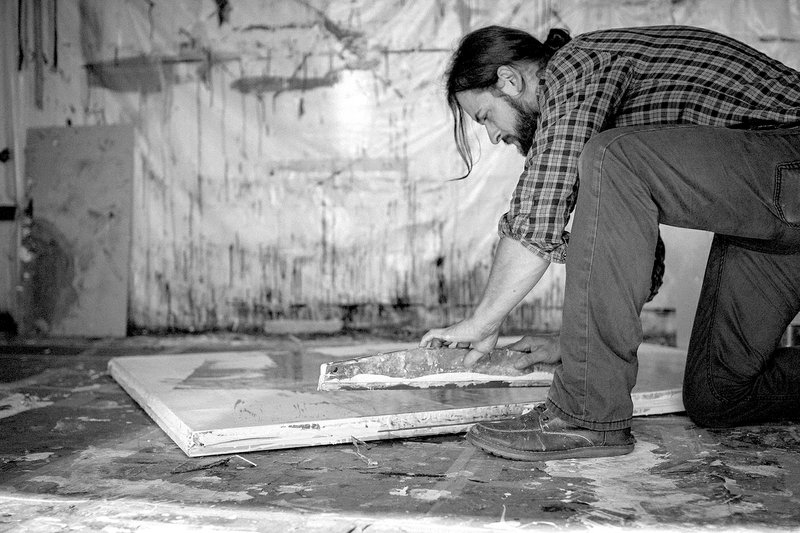The centerpiece of Yasmina Reza's 1996 play "Art" is a large, expensive, completely white painting. As the story unfolds, Serge, the buyer of the piece, and his longtime friend Marc argue over what constitutes "good" art while their friend Yvan attempts to referee.
Jason Shipman, an MFA acting graduate from the UA, is directing the script-in-hand production of "Art" for ArkansasStaged. With five days of rehearsal before Sunday's performance, he says, he "just got very lucky than 90 percent of my job is done for me" thanks to a "dream team" cast -- Bryce Kemph, Bob Hart and Brian McCue -- and "some amazing help from the artist and the museum" -- 21c Museum Hotel in Bentonville.
FAQ
‘Art’
WHEN — 7 p.m. Sunday
WHERE — 21c Museum Hotel in Bentonville
COST — Free with a suggested donation of $3
INFO — facebook.com/Arkans…
"I honestly think if you're telling the story as well as possible the audience will forget about the scripts," he says. "The book becomes an extension of the actor."
It might seem that the painting would be the simplest part of the equation. It's white, right?
But Jonathan Suit, who has a studio art degree from the University of Arkansas, put far more thought than that into the artwork he created for the production.
"At first, the idea was to use an existing artwork for the play," he says, "but once I started reading the script I became excited to make a painting in response. I loved the idea of a dialog between the arts. It raises certain questions about authenticity or authorship. Who is the artist? Is it the playwright, or the fictional painter Antrios, or myself as an interpreter, or maybe any of the painters who have made great, influential and confronting paintings that undoubtedly aided in the forming of the concept for the painting in the script? These questions lead toward an exciting, indirect and collaborative way of getting to the object.
"I was also interested in putting the work on trial, in a way," he adds. "That is to say, if I make a painting and I do it sincerely, as I would any other work, then put it into the context of this play, what happens? How is the object perceived, is it an art object, is it a prop or set, what is the role of intention, does it have artistic value, if so, of what sort and measure is that value? My feeling is that these questions have a direct relationship to the ostensible art-related question that anchors the play."
Suit considered "precedents" for the work -- "to my knowledge there is at least a hundred year history of non-objective, abstract, white, monochromatic painting" -- and artists such as Agnes Martin and Gerhard Richter. "Both of these artists have been very influential in terms of the way I make paintings," he says, "and have both done significant work in monochrome.
"Another consideration was the supports/surfaces group," he goes on. "They were a group of French artists working in the late '60s [and] early '70s -- the same time period as the fictional work from 'Art,'" he says. "They worked within a theoretical and reductive framework, often dismissing many (if not all) of the traditional implements of painting. Which must have presented a substantial challenge to the common aesthetic of French art at the time.
"In terms of my interpretation and execution of the work, I wanted to be mindful of these things and use them to compliment my vision of the painting, as guided by the description in the script.
"It is interesting to consider," he adds, "that if you eliminate the qualifying equation (the good painting versus bad painting argument) and focus on the magnitude of impact, it is the character who, outwardly, least favors the painting that is most affected by it. I think says a great deal about some things art can do and how it can work beyond the conventional subjective measure."
NAN What's Up on 07/08/2016

